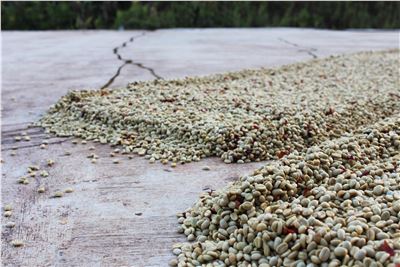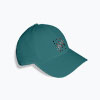
Defect Cup-Skilling
The Roaster Guilds' recent 'Demystifying Defects' cupping session was a rare, guided opportunity to dip a toe into waters that most coffee drinkers will spend a lifetime trying to avoid.
There are few things as likely to cast a dull, miserable shadow over a coffee lover’s otherwise sunny day than a really disappointing cup of coffee.
It plays out like this; it’s the first brew of the morning and as your heart joyously skitters out of the café followed close behind by your feet and trailed by a rather listless brain, something tickles at the back of the procession that everything is not quite well with the world.
Maybe a sense of foreboding started to bloom as the rising cup wafted sheets of vaguely-tainted steam towards your nostrils. Maybe you actually got so far as to subject your tastebuds to a wash of the toe-curlingly foul liquid before realising your horrible mistake. Or maybe you were lucky and thanks to a particularly bad bout of flu your ability to detect the offending notes is non-existent and you are subsequently saved but then you’re still sick and miserable anyway so no one wins after all.
Most of us have been there, and while it was a rare and educational experience, we tend to hastily resolve that won’t be making plans to revisit it again any time soon, thank you.
Coffee Borer Beetles are a major problem for farmers around the globe. The flavours they cause in the cup as a result of severe infestations aren't the most enjoyable, but if we avoid dedicating the time to learn that flavour, we won't be able to discriminate between this and other problems.
Disregarding this, the Australian Specialty Coffee Association’s Roasters Guild recently extended a rather dubious invitation to take part in a nationwide, simultaneous ‘Demystifying Defects’ Cupping. No, it isn’t pronounced ‘Eighth-circle-of-hell’, the correct title is ‘Defect Cupping’. A whole evening of bad coffee in the company of other willing victims located at six different sites across Australia, all by live video link.
In spite of the anxiety that bad coffee tends to inspire, especially amongst members of the coffee industry who spend their days in pursuit of better coffee by the measurement of millimetres, micrograms, and fractions-of-a-degree Celsius, the turn-out in Sydney, Brisbane, Gold Coast, Noosa, Canberra, Adelaide, and Melbourne was brilliant- a number of the venues sold out. Each location had five numbered samples of the same coffee, with each lot concealing a mystery defect in its murky depths.
Credit is certainly due to the incredible team from the Roaster’s Guild; the night ran beautifully between grimaces at cups and some particularly enthusiastic spitting.
Why cup defects? Usually when so much accumulated skill in coffee tasting is gathered around a single set of cups, it’s for competitions where quality, delicacy, and refinement are pitted against each other with the glory of nations at stake. Isn’t this a bit like using a Ferrari to do a paper round?
But if we want coffee to get better, we need to be able to describe what’s bad as well as what’s better, and why. When it’s bad, it means that something along the way went wrong, and there are plenty of things that can go wrong. Age, mould, coffee beetles, black beans, and sour beans are all common offenders (all of which featured at the ASCA session), and they all have their own special unpleasant flavour. Without knowing which one is the one offending your tastebuds, we can’t eradicate it from future harvests.
Above: A quality-assurance officer at origin shows defective beans (right) removed from harvest. Producing great coffee is as much about being able to remove or reduce the bad as it is to bring out the good.
The human capacity to taste is a hideously complex matter, as a glimpse at neuroscientist Gordon M. Shepherd’s exhaustively thorough book, Neurogastronomy: How the Brain Creates Flavour and Why it Matters, makes apparent. Here’s a rundown of the basics
1. When we sense the flavour of food in our mouths, it’s mostly the smell of the food which we sense which we interpret as flavour.
2. Smell is produced when we breathe ‘little puffs of scent from our food and drink’ through our mouths, and upwards through our nasal passages. This is ‘retronasal’ smelling.
3. When we smell, the brain interprets the smell into what Shepherd calls a ‘smell image’. Different smells have different images.
4. When we smell a lot of new smells at once, the brain interprets them as unfamiliar, and they come through as a hubbub of ‘noise’ rather than a clear, identifiable set of scents.
5. The system that communicates what we smell to our brain learns. Repeated exposure to different smells strengthens our ability to detect specific scents. It also subsequently improves the brain’s ability to identify separate, familiar notes from the hubbub of ‘noise’.
Learning to taste anything, as many in our industry will agree, is about practice. If we want to be able to identify a defect and recognise the cause, we need to allow ourselves to be exposed to it in a format where we can commit it to memory just as we do when we’re learning the nuances of a geisha. Willy Wonka vouching that ‘the snozzberries taste like snozzberries!’ will never not be funny because there will forever be a snozzberry-shaped gap in the average reader’s flavour references. If you don’t have personal experience of what a flavour tastes like, you can’t describe something as having that flavour, or relate to someone else’s description.
More opportunities to taste snozzberries are what’s needed. The best format is to do so with a guide knowledgeable enough to help you along the way and explain what the taints are. Fortunately for us if not for our palettes, following the resoundingly positive feedback from last Tuesday’s event, we wouldn’t be surprised if we hear of more in the future.
Bring on the Snozzberries.
Products list
Front mesh baseball cap with signature logo12341234
Jerome first appeared on the scene on 11 April 1970, and continues to make his mark.
Front mesh baseball cap with signature logo12341234
Jerome first appeared on the scene on 11 April 1970, and continues to make his mark.
Herschel backpack in dark blue12341234
The Front Trefoil first appeared on the scene in 1972, and it continues to make its mark.
Herschel backpack in dark blue12341234
The Front Trefoil first appeared on the scene in 1972, and it continues to make its mark.
Accessories Herschel backpack in dark blue12341234The Front Trefoil first appeared on the scene in 1972, and it continues to make its mark. | >
$56.99 |
Image
|
Description
| Property Name |
Stock
|
Price
|
|---|
Accessories Herschel backpack in dark blue1234Jerome first appeared on the scene in April 1970, and continues to make his mark. | 0 | 3 | 0 | 1 | $56.99 |
Image
|
Description
|
Stock
|
Week 1
|
Week 2
|
Week 3
|
Week 4
|
Price
|
|---|
Herschel backpack in dark blue12341234
The Front Trefoil first appeared on the scene in 1972, and it continues to make its mark.
Prod Name12341234
Jerome first appeared on the scene in 1970, and continues to make his mark.
Available balance
Reward balance
Pending balance
Neotek default product cap in black
1234
1234Neotek was the brain child of Jerome Howard and formed in late 2001 to create intuitive, efficient, integrated B2B eCommerce websites
Total price:
$159.99We offer free shipping anywhere in New Zealand. A skilled delivery team will bring the parcels into your office.
If you're not satisfied, return it for a full refund. We'll take care of disassembly and return shipping.

Herschel backpack in dark blue12341234
Jerome first appeared on the scene in 1970, and it continues to make his mark.
Lists are a convenient way to keep track of products you'd like to buy, buy regularly or want to keep a list for a specific event or time. Lists can help you with finding items so you don't have to search the entire site everytime you want to buy them. Lists can also help you remember to place an order for an event (function, birthday, wedding, Christmas etc)
How do I make a list?
To make a list, first go find all the products you want on your list, add them to your basket, and then click the save as list button in the basket, and this will turn all your items in your basket into a list
How do I add more items to a list?
Once you have found an item you want to add to an existing list, go to the details page of that item, and click the add to list button. This will then prompt you for which list to add it to. You can also start a new list this way, with this item as the first item on the new list.
How do I remove items from a list
On this page, find the list you want, and click on it to expand the items on the list, then you can remove items from the list by clicking the remove button next to each line.
How do I change the quantity of an item in the list
On this page, find the list you want, and click the plus or minus buttons to increase or descrease the quantity.
How do I remove a list
On this page, find the list you want, and click the delete button in the list summary.
What is a private list?
Lists can be private or public. A private list can only be used by you, meaning only you can see, use, modify and delete a private list. A public list can be used by all users on the account, which means any user on the account can see, use, modify and delete a public list.
Your order is complete!
Thank you for your order! Your order will be processed within 3-6 hours. You will receive an email confirmation when your order is processed.
All
The World
of Coffee
Generations of knowledge and global trading experience make us experts in connecting roasters to the world of coffee. Every day we share our knowledge and coffee expertise, supporting our partners to sustainably grow and prosper. The World of coffee features everything you need to know about coffee, where it comes from and what it takes to make the perfect cup.
Useful links
Generations of knowledge and global trading experience make us experts in connecting roasters to the world of coffee. Every day we share our knowledge and coffee expertise, supporting our partners to sustainably grow and prosper. The World of coffee features everything you need to know about coffee, where it comes from and what it takes to make the perfect cup.






